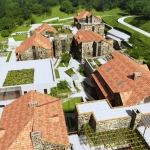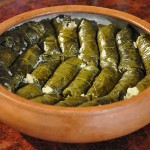During centuries Armenia has been famous for its paint called “vordan karmir”. In many of Greek and Roman sources the paint exported from Armenia was considered to be the best. It was called «arqayakan tsirani» (the purple or Royal Red) with which royal and princely clothes were painted.
The paint vordan karmir is obtained from the insect having the same name. The insect called vordan karmir was spread at the middle parts of Araqs, especially at the salty grounds of Ararat valley, the Lake Urmia and Erzrum. At the last decades, because of pollution and other reasons the existence of vordan karmir has been in danger, and for its protection in 1987 the reserve «Vordan karmir of Ararat» was formed at Ararat valley having a territory of 200 ha. Here a desert is preserved where vordan karmir of Ararat lives on the plant called vordan khot (plant of insect).
For obtaining the paint only females are used. They are wingless, oval-shaped, with 4-12 mm length and having 2 simple eyes. At the beginning of September, during 35-40 days, in the early morning males and females go up to the surface of the ground and get fecundated after which males are abolished and females are covered with ground and lay eggs. The insects are gathered when they go up to the surface of the ground for fecundation.
The obtained paint is called carmine. It is famous for the brightness of its red color, is quite stable towards light and does not fade even during millennia. This is the reason that it was widely spread in the painting of the clothes, frescos and miniature, it was even used as the paint for the seal of king and catholicos and was widely-known even abroad. Still in the 8th century B. C., the king Sargon II of Assyria mentioned about red clothes in the trophy brought from the main god Khaldi’s temple of Mutsatsir. Vordan karmir was used in medicine as well. The fat of the insect was used as anti-inflammatory and febrile medicines. This paint-medicine exported from Armenia is mentioned about in the 1st century by Roman naturalist Plinios Elder, by numerous Arab geographers and others. Since the 18th century, the export of Armenian vordan karmir has been decreased, as there appeared cheaper carmine made of Mexican insects, and the means of obtaining the paint in Armenia has been gradually forgotten. In the 19th century, Sahak Tsaghkakar, a monk of the Mother See of Holy Ejmiatsin, even tsar government, and then soviet scientists started to study the restoration of the means of obtaining the paint.
Today vordan karmir keeps on being at the highlight of scientists’ studies, and the present demand of natural paints has made the interest towards the red wonderful insect and the wonderful red paint made of it greater.
Vordan Karmir (Carmine) from Ararat
Back To Top










